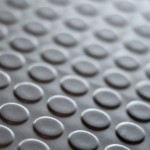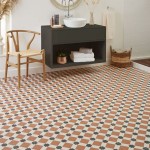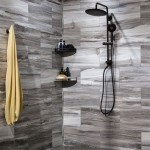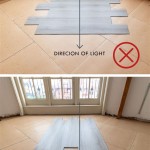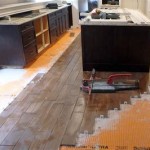Whitewash Parquet Flooring: A Comprehensive Guide
Whitewash parquet flooring has emerged as a popular choice for homeowners and designers seeking to create bright, airy, and sophisticated spaces. This flooring option combines the timeless elegance of parquet patterns with the light-reflecting properties of a whitewashed finish. This article provides a comprehensive overview of whitewash parquet flooring, covering its benefits, types, installation, maintenance, and design considerations.
Parquet flooring, characterized by its geometric patterns created by arranging individual wood blocks, has a rich history dating back to the 17th century. Originally found in opulent European palaces, parquet flooring exudes luxury and craftsmanship. The addition of a whitewashed finish brings a contemporary twist to this classic flooring style, offering a versatile aesthetic that complements a wide range of interior design themes.
The Benefits of Whitewash Parquet Flooring
Whitewash parquet flooring offers several advantages that contribute to its growing popularity. One of the primary benefits is its ability to brighten a room. The light color reflects natural light, making spaces feel more open, spacious, and inviting. This is particularly beneficial in rooms with limited natural light or darker color palettes.
Another significant advantage is the sense of timeless elegance it imparts. Parquet flooring, regardless of the finish, adds a touch of sophistication and classic beauty to any space. The whitewashed finish softens the traditional formality of parquet, creating a more relaxed and modern feel. This combination allows it to blend seamlessly with both contemporary and traditional design styles.
Furthermore, whitewash parquet flooring is versatile in terms of design compatibility. Its neutral base allows it to pair well with a wide array of colors and textures. Whether one is drawn to minimalist Scandinavian interiors, rustic farmhouse aesthetics, or coastal chic designs, whitewash parquet flooring can serve as a complementary foundation.
Finally, quality wood used in parquet flooring offers durability and longevity. When properly installed and maintained, whitewash parquet can withstand daily wear and tear, making it a practical choice for high-traffic areas. The whitewashed finish itself can also help to conceal minor scratches and imperfections, further contributing to its long-term appeal.
Types of Whitewash Parquet Flooring
Whitewash parquet flooring is available in various wood species, each offering unique characteristics in terms of grain patterns, hardness, and color undertones. Oak is a popular choice due to its durability, availability, and distinctive grain. Maple is another option known for its hardness and uniform texture, creating a smoother, more refined look. Walnut offers richer, darker undertones that can be subtly highlighted by the whitewashed finish, creating a warm and inviting atmosphere.
The type of whitewash finish also varies. Some finishes are more opaque, completely covering the wood grain, while others are more translucent, allowing the natural grain to peek through. The choice of finish depends on the desired aesthetic. A more opaque finish creates a cleaner, more modern look, while a translucent finish adds depth and character.
Engineered parquet flooring is a common alternative to solid wood. Engineered flooring consists of a veneer of hardwood bonded to a core of plywood or other composite material. This construction offers greater stability and resistance to moisture and temperature fluctuations, making it suitable for installation in areas with higher humidity levels, such as basements or kitchens. Solid wood, on the other hand, is typically chosen for its authentic feel and the ability to be sanded and refinished multiple times.
The patterns that can be achieved with parquet are numerous, from the classic herringbone and chevron patterns to more intricate geometric designs. The choice of pattern can significantly impact the overall look and feel of the room. Herringbone, with its alternating rows of angled blocks, is a timeless and versatile choice. Chevron, with its V-shaped pattern, creates a more dynamic and modern visual effect. Basketweave and other complex patterns can add a touch of artistry and sophistication.
Installation and Maintenance Considerations
Proper installation is crucial for the longevity and performance of whitewash parquet flooring. It is generally recommended to hire a professional installer who has experience with parquet patterns and wood flooring. The subfloor must be properly prepared, ensuring it is level, clean, and dry. Uneven subfloors can lead to uneven flooring and potential structural issues.
Depending on the type of flooring, the installation method may vary. Solid wood parquet is typically glued or nailed to the subfloor, while engineered parquet can be glued down or floated. Floating installations involve interlocking the planks together without attaching them directly to the subfloor. This method allows for some expansion and contraction of the flooring, reducing the risk of warping or cracking.
Maintenance of whitewash parquet flooring involves regular cleaning to remove dust, dirt, and debris. Sweeping or vacuuming with a soft brush attachment is recommended. Avoid using abrasive cleaners or scrub brushes, as these can damage the finish. Damp mopping with a pH-neutral wood floor cleaner is generally safe, but it is important to avoid excessive moisture. Always wring out the mop thoroughly to prevent water from seeping into the seams.
Protecting the flooring from scratches and dents is also important. Using felt pads under furniture legs prevents scratching, while area rugs can provide additional protection in high-traffic areas. Avoid wearing shoes with sharp heels indoors, and promptly clean up spills to prevent staining.
Over time, the whitewashed finish may require refinishing to restore its original luster. Refinishing involves sanding down the surface to remove the old finish and applying a new coat of whitewash. This process should be performed by a professional who is experienced in wood floor refinishing. Solid wood parquet can be sanded and refinished multiple times, while engineered parquet may have a limited number of refinishing opportunities depending on the thickness of the veneer.
Another aspect of maintenance is controlling humidity levels. Excessive humidity can cause wood to expand, leading to warping or cupping. Conversely, low humidity can cause wood to shrink and crack. Maintaining a consistent humidity level within the recommended range for wood flooring can help to prevent these issues. This can be achieved through the use of humidifiers or dehumidifiers.
The long-term care also includes occasional inspections to identify any potential problems early on. Look for signs of water damage, such as discoloration or warping, and address these issues promptly to prevent further damage. Inspect the seams for any gaps or cracks, and fill them with wood filler if necessary. By proactively addressing minor issues, one can prolong the lifespan of whitewash parquet flooring and maintain its beauty for years to come.
Design Considerations with Whitewash Parquet Flooring
Whitewash parquet flooring offers a versatile canvas for a wide range of interior design styles. In Scandinavian-inspired interiors, it complements minimalist furniture, clean lines, and neutral color palettes. The light color of the flooring enhances the sense of spaciousness and airiness, creating a calming and serene atmosphere.
In farmhouse-style homes, whitewash parquet can be paired with rustic furniture, exposed beams, and natural textures. The whitewashed finish adds a touch of modernity to the traditional farmhouse aesthetic, creating a balanced and inviting space. The flooring can be complemented by area rugs in natural fibers, such as jute or sisal, to add warmth and texture.
Coastal-themed interiors benefit from the light and airy feel of whitewash parquet flooring. It evokes the feeling of sun-bleached wood and sand, creating a relaxed and beachy atmosphere. Pairing the flooring with light blue, white, and beige tones enhances the coastal vibe. Accent pieces such as seashells, driftwood, and nautical-inspired artwork can further enhance the theme.
For modern interiors, whitewash parquet flooring can be combined with sleek furniture, geometric patterns, and bold colors. The neutral base of the flooring allows for experimentation with different color schemes and textures. Consider using contrasting colors, such as black or gray, to create a striking visual impact. Geometric patterns in rugs, artwork, or upholstery can add a touch of modern flair.
When choosing furniture, consider the scale and proportion of the pieces in relation to the parquet pattern. Larger furniture pieces can overwhelm small parquet patterns, while smaller furniture pieces can get lost in larger patterns. Experimenting with different furniture arrangements can help to find the right balance.
Lighting plays a crucial role in enhancing the beauty of whitewash parquet flooring. Natural light is ideal, as it brings out the natural grain and texture of the wood. Artificial lighting can also be used to create different moods and effects. Warm lighting can create a cozy and inviting atmosphere, while cool lighting can create a more modern and sophisticated feel. Consider using a combination of ambient, task, and accent lighting to create a well-lit and visually appealing space.

Sanding Staining In Whitewash Oak Parquet Flooring London

Whitewashed Oak Parquet Flooring Nuances Plank

Pin Page

White Wash Floor Priming Rhwoodfloors Ie

Sanding And Whitewashing Wood Floors

Sanding Staining In Whitewash Oak Parquet Flooring London

White Washed Oak Impervia Herringbone Parquet

Whitewashed Or White Solid Oak Flooring Jg

Parquet Staining White Tone

Sanding And Whitewashing Wood Floors
Related Posts


